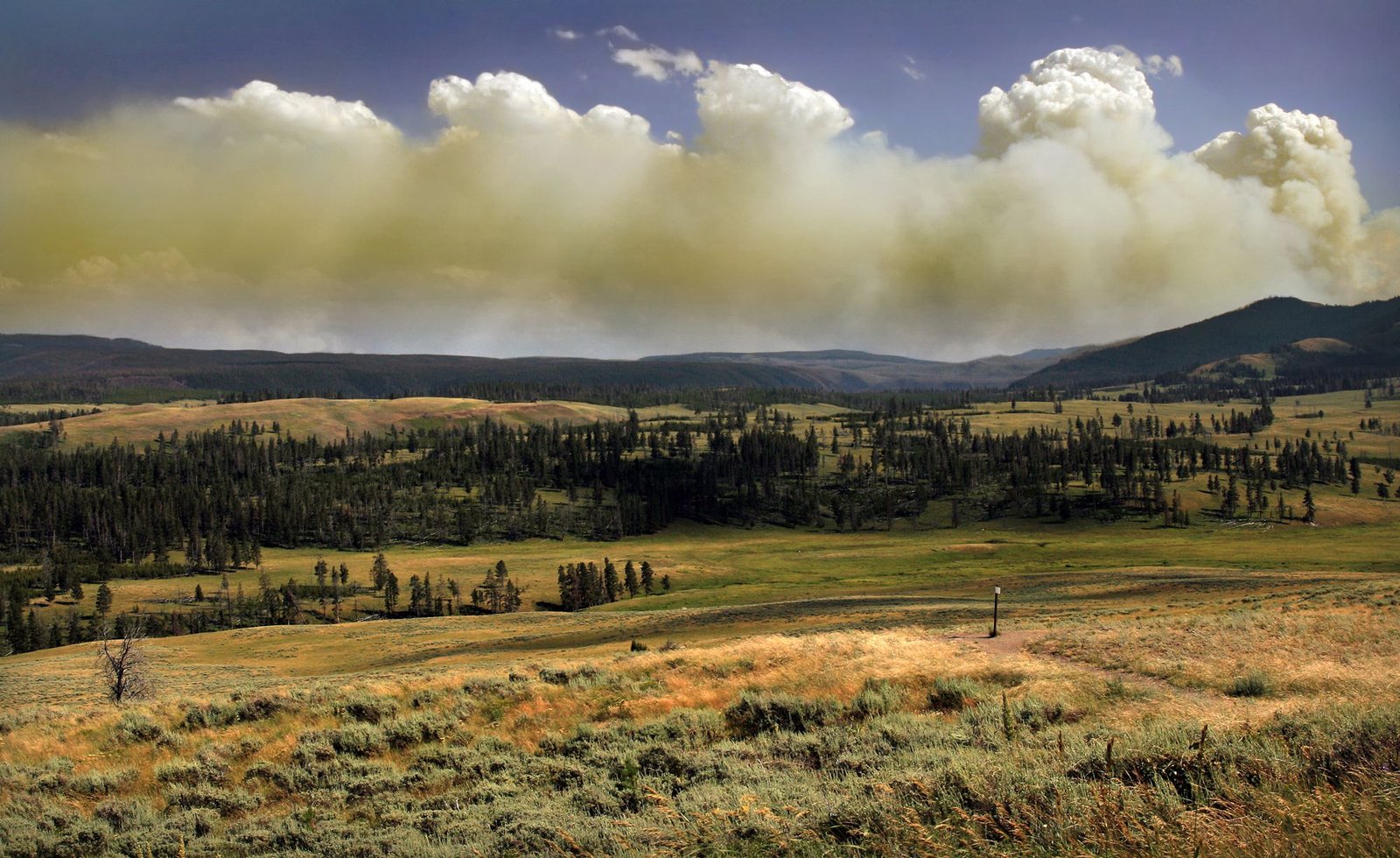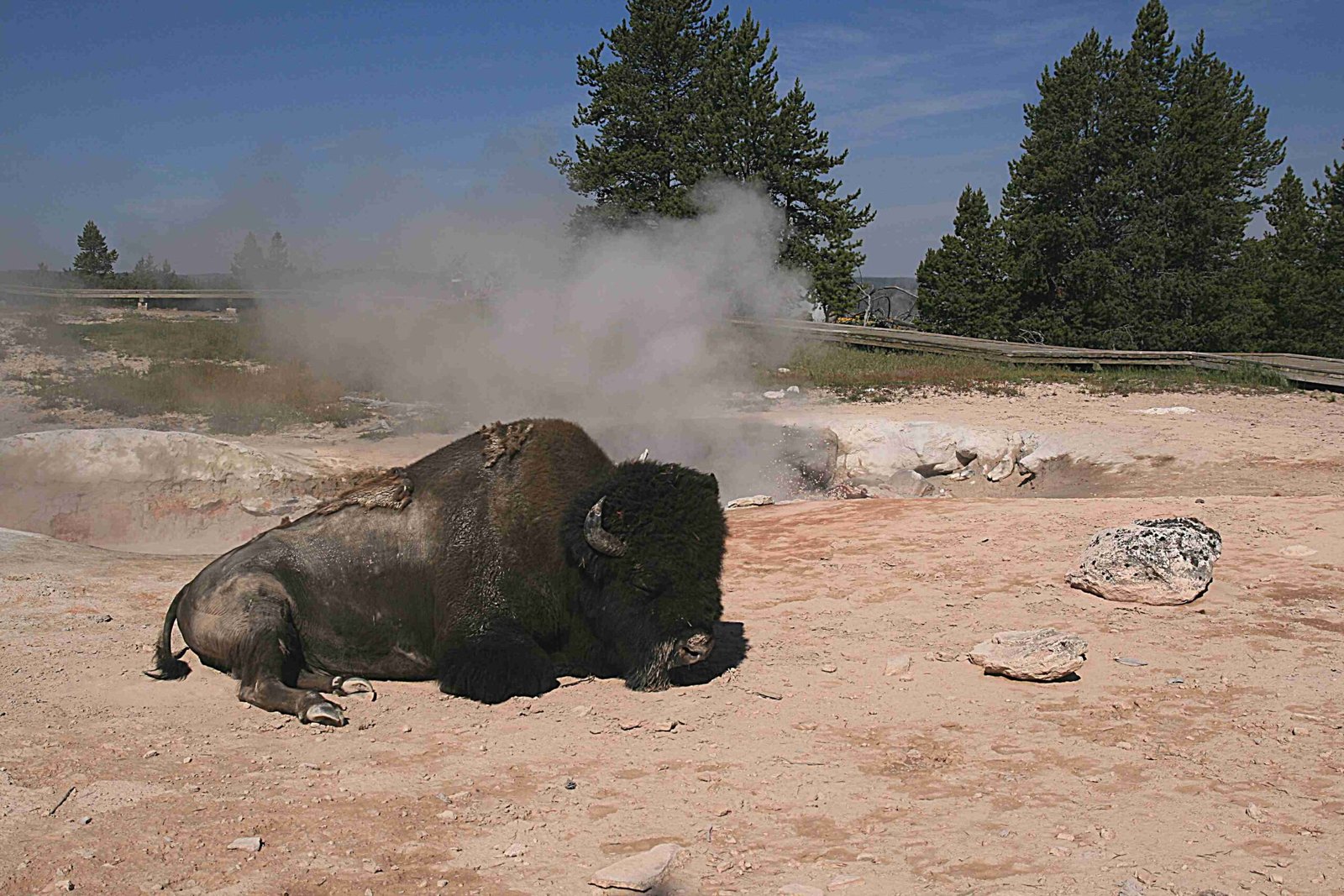The Mud Cauldron in Yellowstone National Park is a captivating geological feature located in the Mud Volcano area. This large, bubbling pool of mud and water showcases the park’s dynamic geothermal activity. With its dark-gray to black coloration due to iron sulfides and the distinct smell of hydrogen sulfide, the Mud Cauldron offers visitors a unique glimpse into Yellowstone’s volcanic underpinnings. Its highly acidic composition and ever-changing nature make it a subject of ongoing scientific interest and a popular attraction for park visitors.
What Are the Specific Geological Features of the Mud Cauldron?

The Mud Cauldron exhibits several distinct geological characteristics that set it apart from other features in Yellowstone National Park:
-
Size and Composition: While exact dimensions are not specified, the Mud Cauldron is a substantial area of bubbling mud and water within the larger Mud Volcano thermal area.
-
Temperature: The mud in the cauldron maintains a high temperature, typically around 184°F (84°C), similar to the nearby Mud Volcano.
-
Mineral Content: The dark coloration of the mud is due to iron sulfides, while the presence of hydrogen sulfide gas contributes to its distinctive odor.
-
Acidity: The mud is highly acidic, with the surrounding area featuring pH levels as low as 1.2 in some spots, comparable to battery acid.
-
Gas Emissions: The bubbling and churning of the mud are caused by the release of gases such as hydrogen sulfide, steam, and carbon dioxide from beneath the surface.
How Can Visitors Access the Mud Cauldron?

Accessing the Mud Cauldron is relatively straightforward for visitors to Yellowstone National Park:
-
Location: The Mud Cauldron is situated in the Mud Volcano area, 5.9 miles north of Fishing Bridge Junction or 9.7 miles south of Canyon Junction on the Grand Loop Road.
-
Parking: A dedicated parking area for the Mud Volcano features is available, making it convenient for visitors to stop and explore.
-
Viewing Area: The Mud Cauldron can be observed from a pathway directly in front of the parking area, ensuring easy access for most visitors.
-
Accessibility: Boardwalks and pathways in the area provide safe viewing points for the Mud Cauldron and surrounding features, suitable for visitors with varying mobility levels.
What Safety Precautions Should Visitors Take?
When visiting the Mud Cauldron and surrounding thermal areas, safety is paramount. Here are essential precautions:
-
Stay on Designated Paths: Always remain on boardwalks and marked trails to avoid contact with hot, acidic mud and unstable ground.
-
Maintain Safe Distances: Keep a respectful distance from all thermal features to prevent burns or injuries.
-
Be Aware of Gas Hazards: The presence of hydrogen sulfide gas can be dangerous. If you feel dizzy or nauseous, move to fresh air immediately.
-
Wildlife Caution: Be alert for wildlife, particularly bison, which frequently roam the area.
-
Emergency Preparedness: Familiarize yourself with the location of the nearest ranger station and carry a map of the park.
-
Weather Considerations: Be prepared for sudden weather changes and dress in layers.
| Safety Measure | Description |
|---|---|
| Path Adherence | Stay on boardwalks and marked trails |
| Distance | Keep away from thermal features |
| Gas Awareness | Move to fresh air if feeling unwell |
| Wildlife | Be cautious of bison and other animals |
| Emergency Info | Know ranger station locations |
| Weather | Dress appropriately for changing conditions |
What Types of Mud Pots Are Found in the Area?
The Mud Volcano area, which includes the Mud Cauldron, features various types of mud pots and thermal features:
-
Mud Geyser: A feature that occasionally erupts with mud and water.
-
Churning Cauldron: A vigorously bubbling mud pot with a constantly changing surface.
-
Black Dragon’s Cauldron: A relatively new feature that emerged in recent years, known for its dark coloration and intense activity.
-
Dragon’s Mouth Spring: While not a mud pot, this nearby feature is known for its cave-like opening and the sound of ‘roaring’ water.
-
Sulfur Caldron: An extremely acidic hot spring with a vibrant yellow color due to sulfur deposits.
These features showcase the diversity of geothermal activity in the area, each with its unique characteristics and behaviors.
How Has the Mud Cauldron Changed Over Time?
The Mud Cauldron and the surrounding Mud Volcano area have undergone significant changes throughout history:
-
Discovery: First documented during the 1871 Hayden Expedition, with Ferdinand Hayden describing it as a remarkable geological feature.
-
Activity Fluctuations: The Mud Volcano itself was once highly active, exploding with mud, but has since become less volatile.
-
Seismic Influence: Minor earthquake tremors in 1979 temporarily increased activity in the area, demonstrating the dynamic nature of these features.
-
Emergence of New Features: The Black Dragon’s Cauldron is a relatively recent addition to the area, showcasing how new thermal features can develop over time.
-
Ongoing Changes: The acidity, temperature, and activity levels of the mud pots continue to fluctuate, influenced by factors such as seismic activity, precipitation, and changes in the underlying hydrothermal system.
What Makes the Mud Cauldron Unique Among Yellowstone’s Thermal Features?
The Mud Cauldron stands out among Yellowstone’s numerous thermal features for several reasons:
-
Mud Composition: Unlike clear water hot springs, the Mud Cauldron’s opaque, bubbling mud offers a distinct visual experience.
-
Sound Effects: The gurgling, splattering, and bubbling noises create an auditory experience unique to mud pots.
-
Chemical Processes: The interaction of hydrogen sulfide with oxygen to form sulfuric acid demonstrates active chemical processes visible to visitors.
-
Ecosystem Impact: The highly acidic environment creates a stark landscape, hostile to most plant life, showcasing the extreme conditions that some microorganisms can tolerate.
-
Dynamic Nature: The constant change in activity levels and appearance makes each visit to the Mud Cauldron potentially different from the last.
How Does the Mud Cauldron Contribute to Scientific Research?
The Mud Cauldron and similar features in Yellowstone provide valuable opportunities for scientific study:
-
Extremophile Research: The harsh, acidic environment of the Mud Cauldron harbors unique microorganisms adapted to extreme conditions, offering insights into the limits of life on Earth and potentially on other planets.
-
Geothermal Energy Studies: Understanding the heat and chemical processes in features like the Mud Cauldron contributes to research in geothermal energy production.
-
Geological Monitoring: Observing changes in the Mud Cauldron’s activity helps scientists track broader geological trends in the Yellowstone caldera.
-
Chemical Analysis: The unique mineral composition of the mud provides data on the underlying geological processes and the movement of elements through the Earth’s crust.
-
Climate Change Impact: Long-term studies of thermal features like the Mud Cauldron can offer insights into how climate change might affect geothermal systems.
In conclusion, the Mud Cauldron in Yellowstone National Park is not just a fascinating tourist attraction but also a valuable scientific resource. Its unique geological characteristics, dynamic nature, and extreme environment make it an essential feature for both casual visitors and serious researchers. As part of the larger Mud Volcano area, it contributes to our understanding of Yellowstone’s complex geothermal system and offers a window into the powerful forces shaping our planet.
References:
1. https://www.yellowstonenationalpark.com/mudvolcano.htm
2. https://www.nps.gov/thingstodo/yell-mud-volcano-trails.htm
3. https://www.nationalparked.com/yellowstone/thermal-areas/mud-volcano
